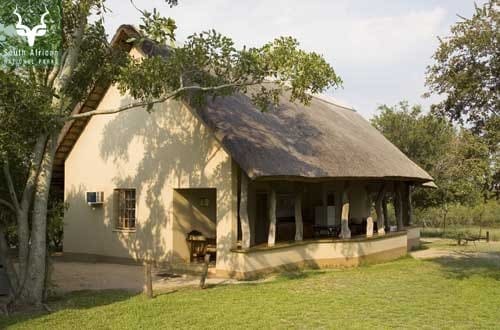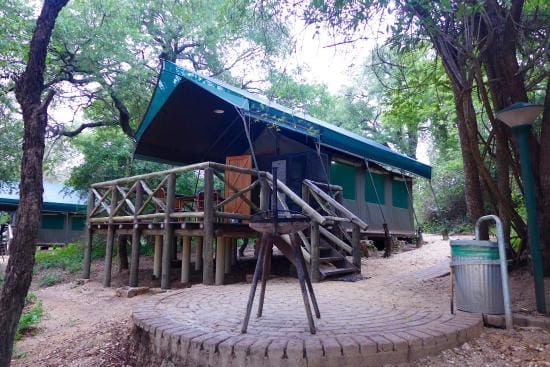Deciding where to stay in Kruger National Park can feel like a safari in itself—there’s just so much to choose from! Whether you’re after a no-frills bush retreat or a lavish lodge experience, Kruger has you covered. With its vast wilderness, rest camps scattered across the park, and private concessions offering top-tier luxury, the options are endless.
Spanning nearly 20 million hectares (yes, it’s larger than Israel!), Kruger is South Africa’s safari gem. With over 3,000 kilometers of road to explore, it’s the ultimate playground for wildlife lovers.
Here’s how to navigate the numerous lodges in Kruger Park and find the perfect spot for your stay.
Where to Stay in Kruger National Park: A Guide to Rest Camps and Lodges
The Basics: Main Camps in Kruger National Park
For a quintessential Kruger experience, look no further than the main rest camps. These government-operated hubs are the heart of Kruger National Park’s accommodation offering, combining convenience with a dash of rustic charm.
Most camps are located along the park’s main roads and come equipped with everything you need:
- Grocery stores for self-catering essentials
- Communal braai (barbecue) and kitchen facilities
- Restaurants or cafeterias
- Petrol stations
- Laundromats, picnic areas, and swimming pools
Whether you’re pitching a tent or staying in a cozy bungalow, these camps are perfect for self-drive explorers.
Skukuza
If Kruger had a capital, it would be Skukuza Rest Camp. Perched along the Sabie River, Skukuza is the park’s largest camp and offers a wide range of amenities, including a fully stocked grocery store, curio shop, petrol station, and even a golf course.
For foodies, there’s a world-class steakhouse with stunning outdoor seating overlooking the river.
Why Stay at Skukuza?
- Accommodation options: Campsites, chalets, and family guesthouses
- Wildlife highlights: A hotspot for the Big Five, with frequent sightings of cheetah and hyena. Crocodiles and hippos can also be spotted right from the restaurant’s deck.
- Accessibility: Just 12 kilometers from the Paul Kruger Gate, it’s an easy drive in.
If you want the best of both worlds—comfort and unbeatable wildlife—Skukuza is a must.
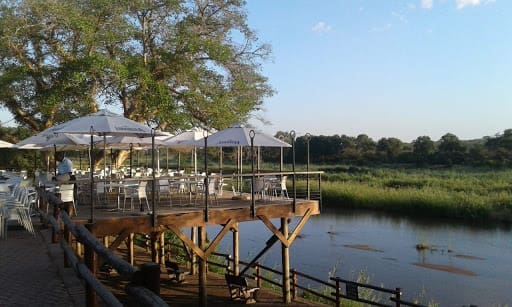
Crocodile Bridge
Nestled along the northern banks of the Crocodile River, Crocodile Bridge Rest Camp is all about that authentic bushveld vibe.
This smaller camp is ideal for travelers seeking a quieter, self-catering experience. Choose from campsites, safari tents, and basic bungalows.
Why Stay at Crocodile Bridge?
- Wildlife highlights: Situated in the game-rich Southern Circle, famous for its lion prides with unique hunting behaviors. Cheetahs, rhinos, and plenty of giraffes and zebras call this area home.
- Unique experience: Hyenas are known to patrol the camp’s fence at night, adding to the wild ambiance.
- Accessibility: Located right at the Crocodile Bridge Gate, making it an easy and scenic entry point.
Pro tip: Keep your camera ready—wildlife sightings often begin before you’ve even left the camp.

Lower Sabie
If stunning views and prime wildlife sightings are your priorities, Lower Sabie Rest Camp delivers in spades.
Overlooking the Sabie River, this camp is a favorite among self-drive safari enthusiasts, thanks to its variety of amenities and picturesque restaurant deck.
Why Stay at Lower Sabie?
- Accommodation options: Campsites, safari tents, bungalows, and a guesthouse—some with riverfront views.
- Wildlife highlights: One of the park’s most game-dense areas. Think lions, cheetahs, elephants, hippos, rhinos, and buffalo. The H4-1 road between Lower Sabie and Skukuza is legendary for leopard sightings.
- Accessibility: About 34 kilometers (a two-hour drive) from the Crocodile Bridge Gate.
If you’re after breathtaking scenery paired with top-notch game viewing, Lower Sabie is the place to be.
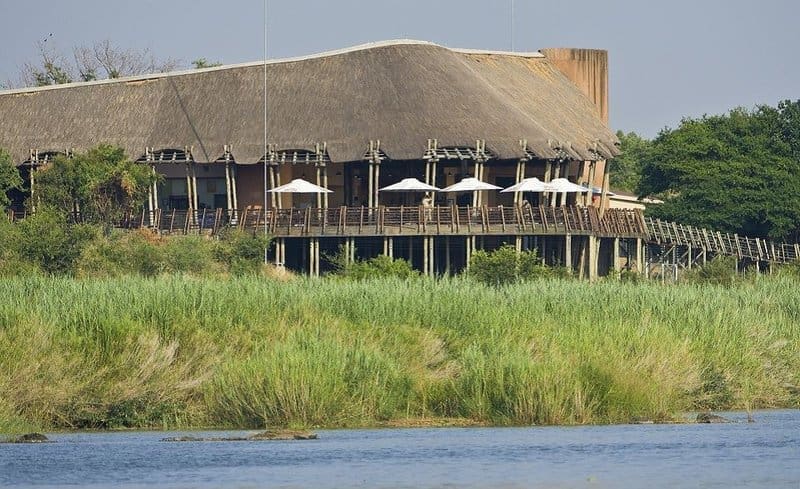
Satara
Nestled in the heart of Kruger’s “Predator Country,” Satara Rest Camp is the place to be for big cat enthusiasts.
This lively camp buzzes with visitors hoping for a glimpse of the majestic lions, leopards, and cheetahs that frequent the area.
What to Expect at Satara
- Accommodation: Campsites, chalets, and guest cottages, laid out in neat circles within the wooded camp.
- Amenities: A grocery store, takeaway restaurants, and all the basics for a comfortable stay.
- Wildlife highlights: Satara is renowned for its lion sightings and cheetah chases. The open, flat terrain is ideal for spotting zebras, giraffes, elephants, and buffalo too.
With easy access via the Orpen Gate (48 kilometers away), Satara is the ultimate base for those eager to dive into the park’s predator-rich wilderness.

Punda Maria
Punda Maria Rest Camp feels like Kruger’s best-kept secret, tucked away in the park’s northernmost region.
Known for its unique flora and serene ambiance, this camp is a haven for nature lovers and birdwatchers alike.
Why Choose Punda Maria?
- Accommodation: Options range from campsites to safari tents and bungalows, catering to all budgets.
- Wildlife highlights: While sightings of big game like elephants and buffalo are possible, the real charm lies in the smaller details—zebra herds, eland, sable antelopes, and a vibrant array of birdlife. Lucky visitors might even spot wild dogs or lions.
- Botanical wonders: The camp boasts plant species found nowhere else in the park.
Easily accessible from the Punda Maria Gate, just 8 kilometers away, this camp is perfect for those seeking a tranquil and off-the-beaten-path experience.
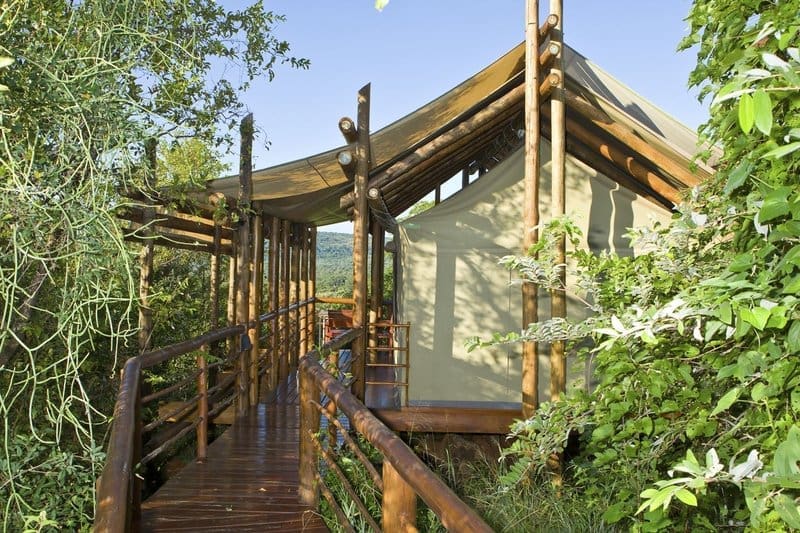
Berg-en-Dal
Set against a backdrop of rugged hills, Berg-en-Dal is the only rest camp located in a mountainous area of Kruger.
Bordered by dams and dry riverbeds, this camp is as scenic as it is serene.
Highlights of Berg-en-Dal
- Accommodation: Campsites, chalets, and bungalows nestled among lush vegetation.
- Wildlife highlights: The surrounding Malelane area is home to white rhinos, kudu, elephants, and warthogs. Leopards are often seen here, sometimes even drinking at the camp’s dam. Wild dogs also roam nearby, though sightings are rare.
Berg-en-Dal is a mere 12 kilometers from the Malelane Gate, making it a convenient entry point for visitors seeking a more rugged safari experience.
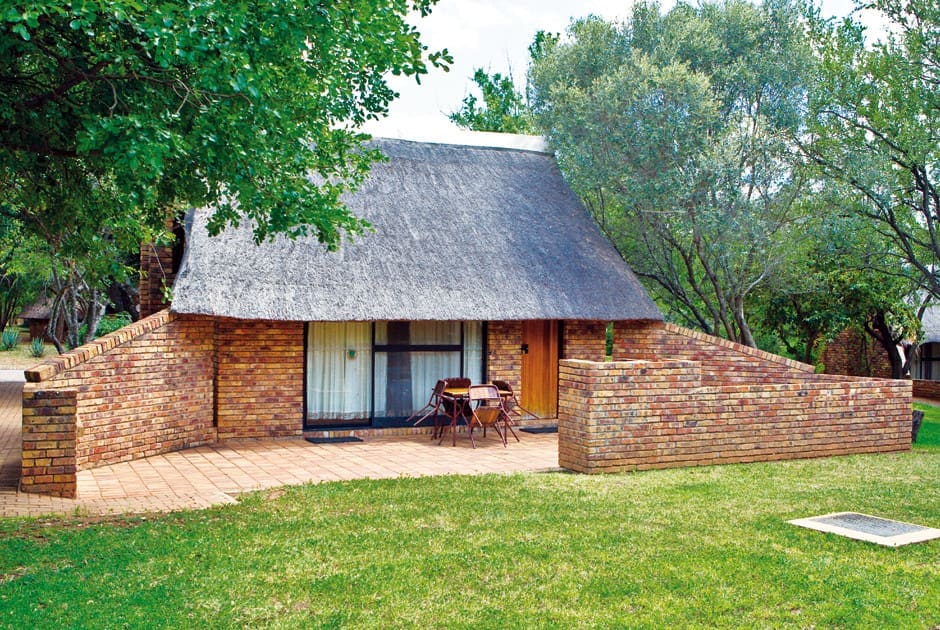
Letaba
Perched on a bend of the Letaba River, this rest camp offers a lush, green escape amidst Kruger’s iconic mopane veld. Letaba’s name, meaning “river of sand,” reflects the sandy riverbeds that attract an abundance of wildlife.
Why Stay at Letaba?
- Accommodation: From campsites and huts to guest cottages, there’s something for everyone.
- Wildlife highlights: Elephants are the stars here, frequently seen along the river. Buffalo and waterbuck are also common, though rhino sightings are rare. At night, the camp comes alive with the sounds of owls, frogs, and the occasional lion roar.
- Scenic charm: The river views make this camp an ideal spot for unwinding after a day of game drives.
Located 51 kilometers from the Phalaborwa Gate, Letaba is a tranquil haven that offers a mix of wildlife and serenity.
An elephant walking through Letaba Rest Camp:
Olifants
Perched high above the Olifants River, this rest camp delivers views that rival an eagle’s. With sweeping vistas of the river below, the Olifants Rest Camp offers a truly unique window into Kruger’s breathtaking landscapes.
Why Stay at Olifants?
- Accommodation: Bungalows and guest houses designed for comfort and relaxation.
- Wildlife highlights: Elephants are a common sight, along with lions, leopards, and even Cape clawless otters near the lookout point. Within the camp, vervet monkeys, baboons, and bush babies are frequent visitors.
- Scenic charm: The camp’s elevated location makes it one of the most picturesque spots in the park.
Easily accessed from the Phalaborwa Gate (83 kilometers, or a three-hour drive), Olifants is an unforgettable stop for wildlife enthusiasts and photographers alike.
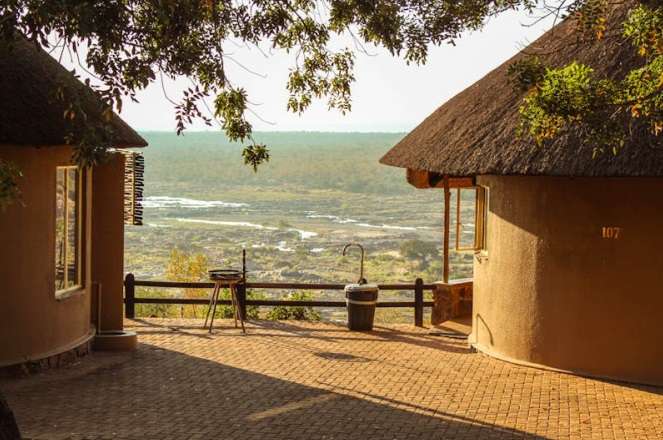
Orpen
Tucked along Kruger’s western border, Orpen Rest Camp is a smaller camp with a big reputation.
Surrounded by open plains and scattered trees, it’s an ideal base for experiencing Kruger’s biodiversity up close.
What Makes Orpen Special?
- Accommodation: Bungalows and guest cottages offer a cozy retreat after a day of adventure.
- Wildlife highlights: With sweet grass-covered plains nearby, this area attracts browsers like zebras and giraffes, which in turn lure predators like lions, leopards, and cheetahs. Wild dogs are also frequently seen.
- Accessibility: Located right at the Orpen Gate, it’s a convenient entry point to the park.
For travelers seeking a quieter experience with plenty of wildlife action, Orpen is a hidden gem.
Guest Cottage in Orpen Rest Camp | Where To Stay In Kruger National Park
Shingwedzi
Deep in the mopane woodlands of northern Kruger, Shingwedzi Rest Camp offers a rustic escape for those looking to explore the park’s wilder, less-visited areas.
Highlights of Shingwedzi
- Accommodation: Choose from campsites, huts, or cottages, arranged in two charming circles.
- Wildlife highlights: The nearby Shingwedzi River and Kanniedood Dam attract waterbuck, kudu, elephants, and an impressive array of birdlife. Predators like lions, leopards, and hyenas are common, and wild dogs occasionally roam the area.
- Scenic drives: The open plains near Babalala Picnic Site are excellent for spotting cheetahs.
Accessible from the Punda Maria Gate (71 kilometers, about a three-hour drive), Shingwedzi is a rustic retreat with incredible game-viewing opportunities.
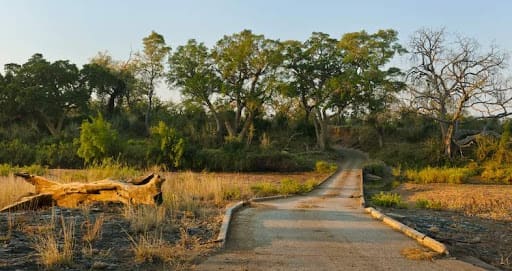
Pretoriuskop
As Kruger’s oldest rest camp, Pretoriuskop offers a unique mix of history, striking granite outcrops, and lush vegetation.
Located in the park’s southwestern corner, this camp is rich in both scenery and wildlife.
Why Choose Pretoriuskop?
- Accommodation: Options for campers, couples, and families, all surrounded by red trees and exotic flowers.
- Wildlife highlights: Both species of rhino, elephants, and buffalo roam nearby. Look out for rock hyrax, klipspringers, and sable antelope in the rocky areas. Wild dogs and cheetahs are sometimes spotted in the dense vegetation.
- Natural beauty: Shabeni Hill, a 3.5-billion-year-old granite outcrop, is a geological marvel.
Just 9 kilometers from the Numbi Gate, Pretoriuskop is a great choice for first-time visitors or those seeking a mix of history and natural beauty.

Mopani
Tucked away near the Pioneer Dam, Mopani Rest Camp is an oasis of wild beauty. Named after the mopane veld that surrounds it, this camp’s centerpiece is a giant baobab tree that adds to its unique charm.
Why Stay at Mopani?
- Accommodation: A variety of options, including bungalows, cottages, and guest houses.
- Wildlife highlights: While the dense mopane vegetation might limit visibility, hippos, elephants, lions, and even caracals have been spotted in the area. The Nshawu pans and Tropic of Capricorn loop are excellent for game viewing.
- Unique atmosphere: The camp’s wild foliage and tranquil setting make it feel like a hidden retreat.
Mopani is perfect for travelers looking to escape the crowds and enjoy a more secluded Kruger experience.
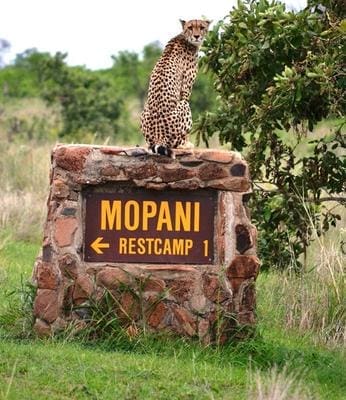
Bush Camps In Kruger National Parks
Bush camps are designed for self-sufficiency, with most units featuring kitchenettes on private verandas. Appliances like hairdryers and cell phone chargers may not be usable in some camps due to limited power, so prepare for a true unplugged experience.
From scenic views to exclusive wildlife encounters, these camps offer a unique perspective on where to stay in Kruger National Park.
Bataleur
As Kruger’s oldest and smallest bush camp, Bataleur is steeped in charm. Located in the northern Mopane woodlands, this camp offers seven family cottages and a game-viewing hide overlooking a waterhole.
Why Stay at Bataleur?
- Exclusive access: The nearby Silwervis and Rooibosrand dams are restricted to camp residents and attract hippos, crocodiles, and the occasional leopard.
- Wildlife highlights: Open plains in the area are frequented by tsessebe, wildebeest, and zebras.
- Rustic charm: Named after the bateleur eagle, this camp embodies the spirit of Kruger’s untamed beauty.
Bataleur is a four-hour drive (140 kilometers) from the Phalaborwa Gate, but the journey is well worth the remote experience.
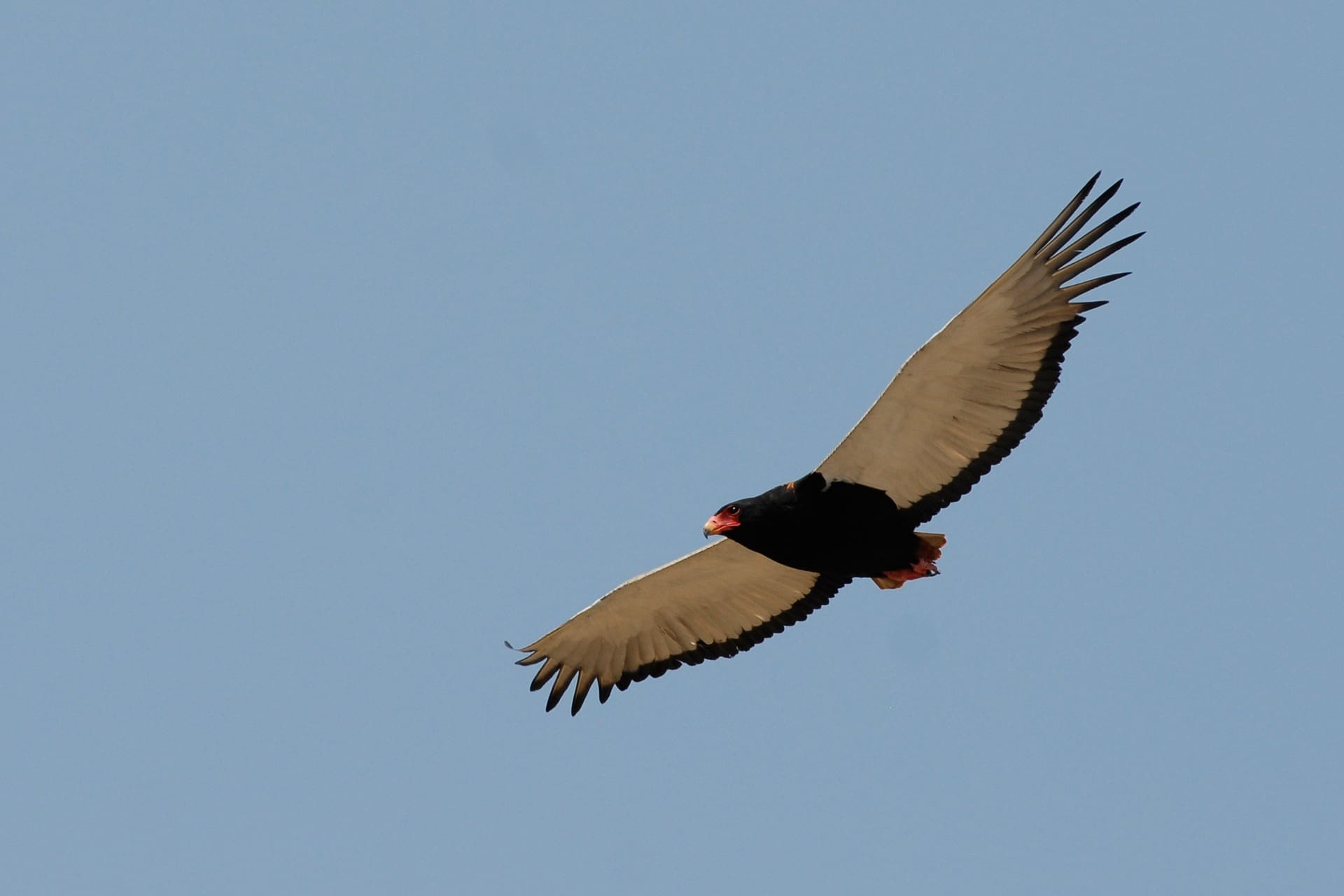
Biyamiti
Nestled along the Mbiyamiti River, Biyamiti Bush Camp is surrounded by dense thickets and towering trees, creating a lush sanctuary for wildlife. With 15 guest cottages, it’s an idyllic spot for families and nature enthusiasts.
Why Stay at Biyamiti?
- Wildlife haven: Expect sightings of giraffes, kudus, elephants, and predators like lions, leopards, and hyenas. Wild dogs and cheetahs are occasional visitors too.
- Scenic setting: The camp’s wild fig and jackalberry trees add to its natural beauty.
Biyamiti is easily accessible from the Malelane Gate, just 39 kilometers (about two hours) away.

Shimuwini
Shimuwini’s name, meaning “Place of the Baobab Tree,” perfectly reflects its location along the Letaba River.
This camp is home to some of Kruger’s most majestic baobabs, including one that’s over 2,000 years old.
Why Stay at Shimuwini?
- Updated amenities: Shimuwini has been renovated to provide modern comforts while maintaining its rustic charm.
- Diverse wildlife: Regular sightings include lions, cheetahs, leopards, and hippos. The surrounding area is rich in antelope species, baboons, and buffalo.
- Riverside views: All 15 cottages offer stunning views of the Letaba River.
Located about 50 kilometers (a two-hour drive) from the Phalaborwa Gate, Shimuwini combines history, scenery, and wildlife.
Elephants under the shade of a giant baobab tree near Shimuweni Bush Camp | Where To Stay In Kruger National Park
Sirheni
Situated on the northern plains of Kruger, Sirheni Bush Camp offers 15 cottages overlooking the Mphongolo River.
The camp’s name, meaning “cemetery” in Tsonga, refers to an elephant graveyard nearby, adding an air of mystique.
Why Stay at Sirheni?
- Wildlife encounters: The river attracts lions, hyenas, and a resident leopard that’s frequently seen by guests. Rare antelope species like roan, sable, and tsessebe roam the area.
- Unique features: Two bird hides provide excellent vantage points for birdwatching and game viewing.
Sirheni is about 54 kilometers (a two-hour drive) from the Punda Maria Gate, offering a remote and rewarding bush experience.
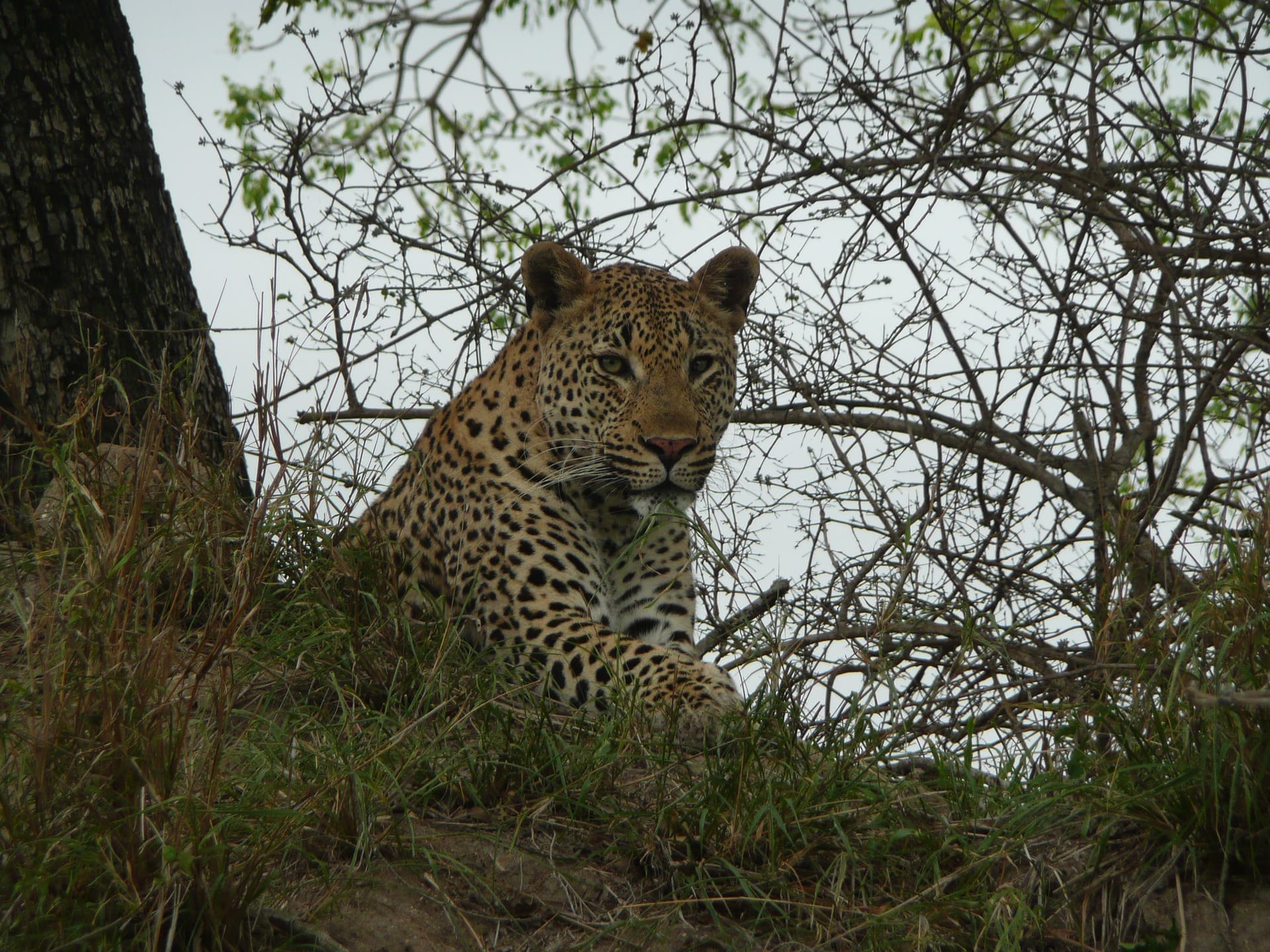
Talamati
Talamati, meaning “Lots of Water,” may be set in a dry riverbed, but don’t let that fool you. Its underground water reservoir nourishes the surrounding vegetation, creating a haven for wildlife.
Why Stay at Talamati?
- Abundant wildlife: The fertile grasslands draw giraffes, kudus, zebras, and their predators, including lions and hyenas.
- Family-friendly: With 15 cottages, it’s an ideal retreat for families looking to immerse themselves in the bush.
- Secluded charm: Located in a wide valley, the camp offers a peaceful escape.
Talamati is just 30 kilometers (about 90 minutes) from the Orpen Gate, making it an accessible yet tranquil base for exploring Kruger.
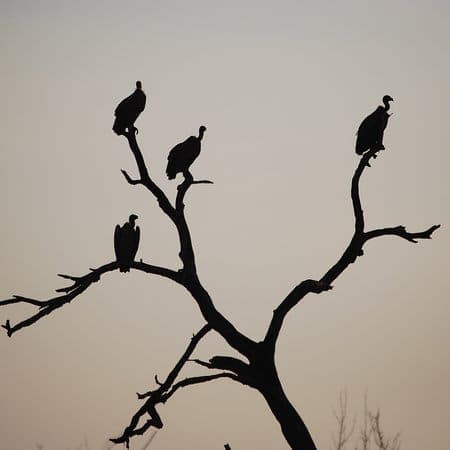
Bush Lodges In Kruger National Park
Kruger’s bush lodges are designed for those who value solitude and exclusivity. Kitchens in each unit come with gas stoves, ovens, fridges, freezers, and all the essentials for cooking and dining.
Communal braai and barbecue facilities make for memorable evenings under the stars, sharing meals with friends or family. With restricted access, these lodges guarantee a quiet, serene atmosphere.
Boulders Bush Lodge
Located about 25 kilometers south of Mopani Rest Camp, Boulders Bush Lodge is a hidden gem built into the dramatic rocky outcrops of northern Kruger. The unique architecture integrates seamlessly with the natural surroundings, creating a truly immersive experience.
Why Stay at Boulders?
- Unique design: Elevated on stilts, the units are connected by wooden boardwalks, giving the lodge a treehouse-like charm.
- Perfect for groups: With a capacity of just 12 guests, Boulders is ideal for families or close-knit groups.
- Scenic beauty: The rocky backdrop offers stunning views and a sense of serenity.
Boulders is approximately 55 kilometers (a two-and-a-half-hour drive) from the Phalaborwa Gate. Its remote location makes it perfect for those seeking solitude without compromising comfort.
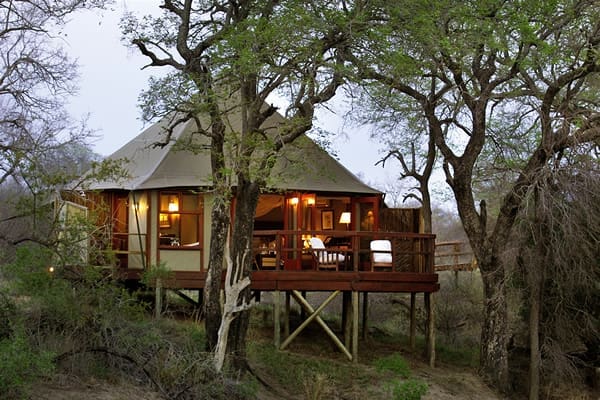
Pafuri Border Camp
Situated in Kruger’s northernmost region near the confluence of the Luvuvhu and Limpopo Rivers, Pafuri Border Camp is a haven for bird enthusiasts.
Its lush riverine landscape is renowned as one of South Africa’s most productive birding areas.
Why Stay at Pafuri?
- Family-friendly: The camp offers three spacious, family-sized cottages, each with en-suite bathrooms.
- Birding hotspot: From colorful kingfishers to rare Pel’s fishing owl, this area is a magnet for birdlife.
- Scenic location: The proximity to the rivers ensures spectacular views and a vibrant ecosystem.
Pafuri Border Camp is about 70 kilometers from the Punda Maria Gate, offering a secluded retreat steeped in natural beauty.
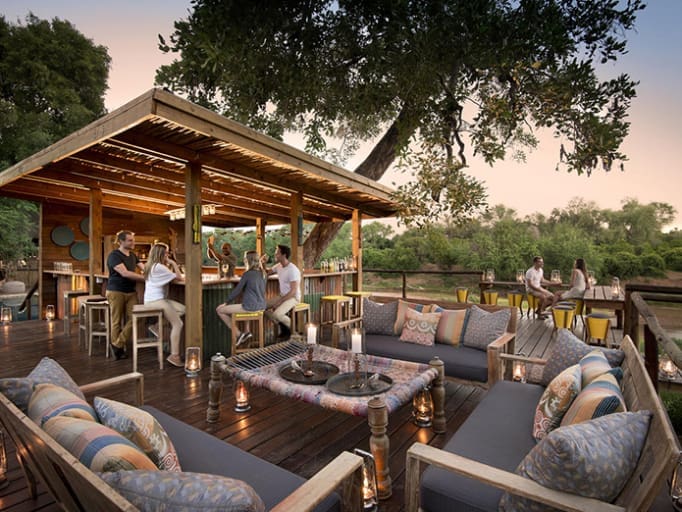
Roodewal Bush Lodge
Tucked along the banks of the Timbavati River, Roodewal Bush Lodge provides a secluded escape surrounded by lush Natal Mahogany and Jackalberry trees.
This lodge is a short distance from Satara, making it a convenient yet tranquil choice.
Why Stay at Roodewal?
- Privacy: Each sleeping unit offers a high level of seclusion, ideal for unwinding in peace.
- Stunning views: The braai area overlooks the Timbavati River, providing a picturesque setting for outdoor dining.
- Spacious accommodations: With 18 beds spread across multiple units, Roodewal is perfect for larger groups.
Located 75 kilometers (about three hours) from the Orpen Gate, Roodewal combines accessibility with an unmatched sense of isolation.
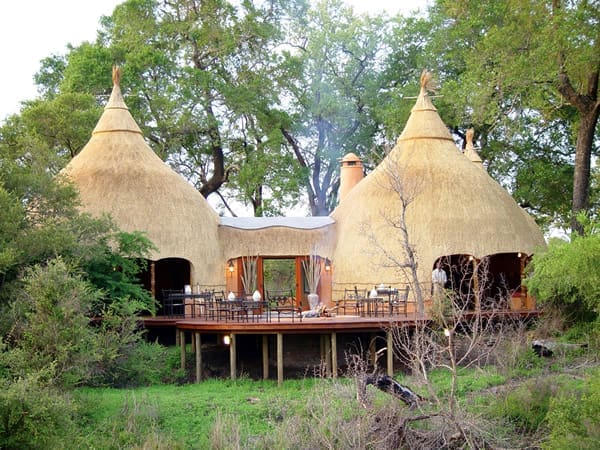
Satellite Camps In Kruger National Park
Satellite camps are perfect for those who prefer a quiet, back-to-basics stay. With self-catering accommodations and camping facilities, they cater to adventurous travelers seeking solitude in nature.
From rustic chalets to tented camps, these camps deliver the charm of Kruger’s bushveld with the convenience of nearby main rest camps.
Balule: A Rustic Heart of Kruger
Balule Satellite Camp is the definition of remote. Named after the Tsonga word for the Olifants River, this camp sits in the heart of Kruger, just a short distance from Olifants Rest Camp.
Why Stay at Balule?
- Rustic charm: With no electricity and minimal facilities, Balule offers a truly off-the-grid experience. A low fence is the only barrier between the camp and the surrounding wildlife.
- Wildlife highlights: Elephants are frequent visitors to the area, while baboons and vervet monkeys are often spotted within the camp itself.
- Access: Located 85 kilometers from the Phalaborwa Gate, it requires about a three-hour drive.
Balule’s simplicity and connection to nature make it a must-visit for bush purists.
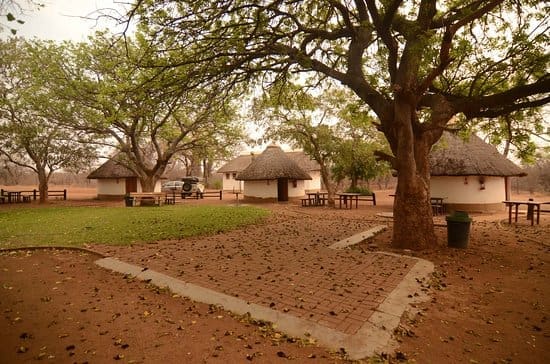
Malelane
Nestled near the Crocodile River, Malelane Satellite Camp offers a unique position on the park’s boundary.
The camp’s small size ensures an intimate bush experience with excellent game-viewing opportunities.
Why Stay at Malelane?
- Convenient location: Just 5 kilometers from the Malelane Gate, it’s one of the most easily accessible satellite camps.
- Accommodation options: Electrified campsites and bungalows provide basic but comfortable stays.
- Wildlife highlights: The surrounding area is rich in game, with regular sightings of the Big Five.
Malelane is perfect for first-time visitors or those looking for a quick escape into the wild.

Maroela
Maroela Satellite Camp, situated along the banks of the Timbavati River, is one of Kruger’s few camps catering exclusively to caravans and campers.
Its minimalist setup is ideal for those who enjoy pitching their own tent under the African sky.
Why Stay at Maroela?
- Exclusive camping: With no pre-erected structures, Maroela is a haven for caravanners and campers seeking a true outdoor experience.
- Scenic views: Wildlife frequently visits the watering hole near the camp, and a rustic viewing platform offers stunning views of the Timbavati River.
- Wildlife highlights: Large herds of zebra and wildebeest roam the area, attracting predators like lions and leopards.
Located just 3 kilometers from the Orpen Gate, Maroela combines convenience with an authentic wilderness vibe.
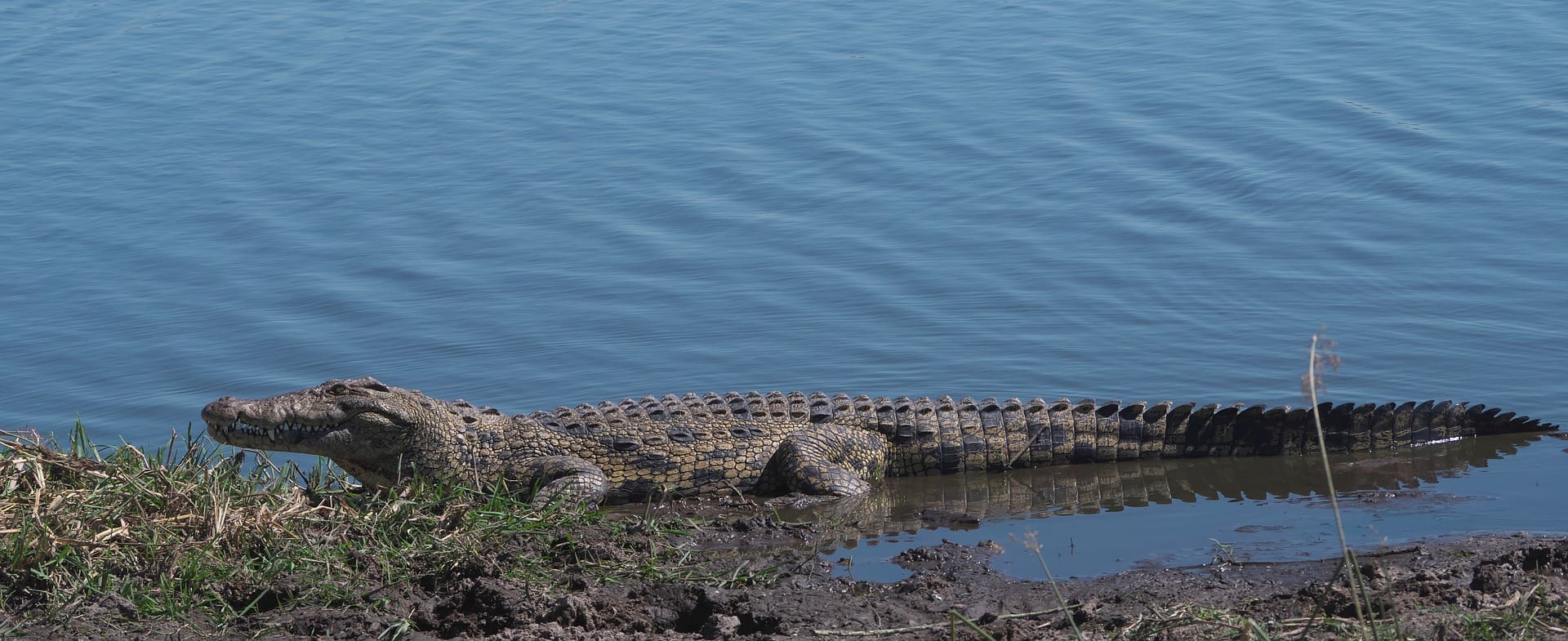
Tamboti
Tamboti Satellite Camp, also set along the Timbavati River, is one of the most popular camps in Kruger.
Its exclusively tented accommodation ranges from budget-friendly options to semi-luxury safari tents, making it a versatile choice for different travelers.
Why Stay at Tamboti?
- Unique accommodations: From basic tents to semi-luxury options, Tamboti offers a variety of choices for adventurous travelers.
- Family-friendly: The camp features a boma area for gatherings and a bird hide for quiet wildlife observation.
- Natural beauty: Towering acacias, marulas, and bush willows create a lush, wild atmosphere within the camp.
Just a 10-minute (4-kilometer) drive from the Orpen Gate, Tamboti is easily accessible yet feels wonderfully secluded.
Safari tent accommodation at Tamboti tented camp | Places To Stay In Kruger National Park
Overnight Hides In Kruger National Park
By day, these hides serve as viewing platforms for birdwatchers and wildlife enthusiasts. By night, they transform into primitive sleeping spaces where guests can immerse themselves in the nocturnal rhythms of the African bush.
With no electricity or running water, these hides are about as close to nature as you can get.
- Sleeping arrangements: Units fold down from the walls and are bolted back during the day.
- Facilities: A basic boma/braai area is available, but you’ll need to bring your own cutlery, crockery, and luxuries.
- Important rules: Once settled in, you can’t leave until dawn, and all guests must vacate the hide 30 minutes before the main gates open.
Sable Hide: A Night by the Dam
The Sable Sleepover Hide offers a front-row seat to the bustling wildlife activity at Sable Dam. By day, it’s a bird hide, but come nightfall, it transforms into a rustic yet magical place to sleep.
Why Stay at Sable?
- Incredible sounds: The roar of lions and the grunts of hippos resonate through the night, creating an unforgettable auditory experience.
- Prime location: Overlooking Sable Dam, this hide is a magnet for animals coming to drink, offering spectacular nighttime sightings.
- Accessibility: Located just 10 kilometers from the Phalaborwa Gate, it’s one of the more accessible sleepover hides in Kruger.
Sable is perfect for those who want to feel the pulse of the bush up close, with minimal barriers between them and nature.
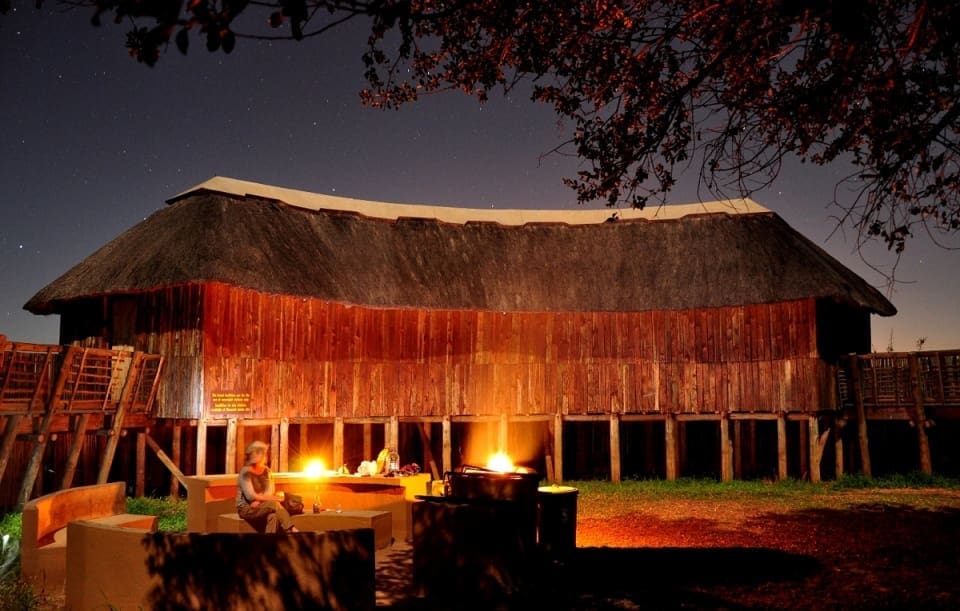
Shipandani Hide
Located along the Tsendze River, Shipandani Sleepover Hide is another incredible spot to experience Kruger’s nighttime magic. Just a short drive from Mopani Rest Camp, this hide offers an intimate encounter with the park’s wildlife after dark.
Why Stay at Shipandani?
- Diverse wildlife: Large buffalo herds and bachelor elephant groups are frequent visitors to the area around the hide.
- Remote ambiance: With its location near the river, the hide provides a serene yet thrilling overnight experience.
- Accessibility: It’s 3 kilometers south of Mopani Rest Camp and about 70 kilometers (a three-hour drive) from the Phalaborwa Gate.
Shipandani is ideal for adventurers seeking solitude, wildlife, and the enchanting sounds of Kruger at night.

Wrapping Up: Where to Stay in Kruger National Park
Kruger National Park offers a vast array of accommodation options, each catering to a different style of safari experience. Whether you’re soaking in luxury at a private lodge, connecting with nature in a rustic bush camp, or camping under the stars at a satellite camp, every stay brings you closer to the magic of Africa’s wilderness.
From the bustling hubs of rest camps like Skukuza and Lower Sabie to the serene solitude of overnight hides like Sable and Shipandani, where to stay in Kruger National Park is not just a matter of convenience—it’s a defining part of your safari adventure. Each location offers unique access to the park’s landscapes, wildlife, and unforgettable moments.
As you plan your trip, consider mixing and matching different types of accommodation. Start your journey in the comfort of a rest camp, then venture out to a bush lodge for exclusivity, and finish with a night at a sleepover hide for an unparalleled connection with nature.

